Related Research Articles
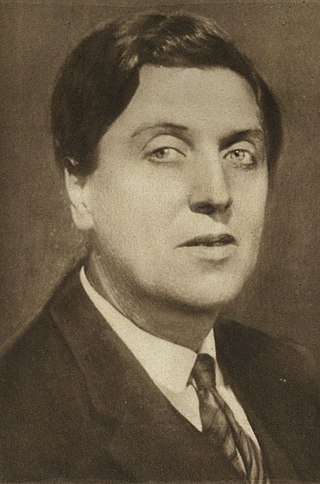
Alban Maria Johannes Berg was an Austrian composer of the Second Viennese School. His compositional style combined Romantic lyricism with the twelve-tone technique. Although he left a relatively small oeuvre, he is remembered as one of the most important composers of the 20th century for his expressive style encompassing "entire worlds of emotion and structure".

The term string quartet can refer to either a type of musical composition or a group of four people who play them. Many composers from the mid-18th century onwards wrote string quartets. The associated musical ensemble consists of two violinists, a violist, and a cellist.

Anton Webern was an Austrian composer and conductor. His music was among the most radical of its milieu in its concision and use of then novel atonal and twelve-tone techniques in an increasingly rigorous manner, somewhat after the Franco-Flemish School of his studies under Guido Adler. With his mentor Arnold Schoenberg and his colleague Alban Berg, Webern was at the core of those within the broader circle of the Second Viennese School. He was arguably the first and certainly the last of the three to write music in a style lauded for its aphoristic, expressionist potency, reflecting his instincts and the idiosyncrasy of his compositional process.
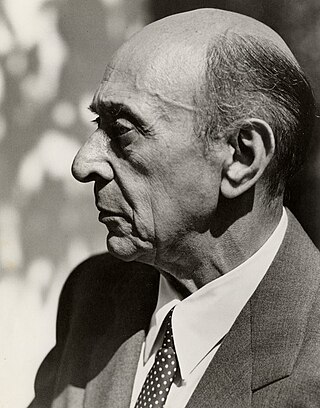
Arnold Schoenberg or Schönberg was an Austrian-American composer, music theorist, teacher, writer, and painter. He is widely considered one of the most influential composers of the 20th century. He was associated with the expressionist movement in German poetry and art, and leader of the Second Viennese School. As a Jewish composer, Schoenberg was targeted by the Nazi Party, which labeled his works as degenerate music and forbade them from being published. He emigrated to the United States in 1933, becoming an American citizen in 1941.
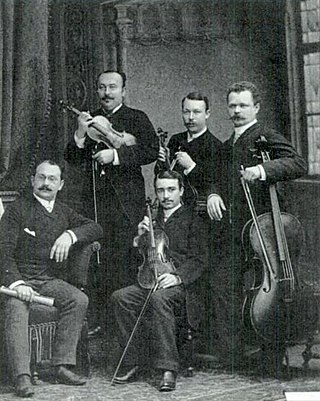
In classical music, a piano quintet is a work of chamber music written for piano and four other instruments, most commonly a string quartet. The term also refers to the group of musicians that plays a piano quintet. The genre particularly flourished during the nineteenth century.
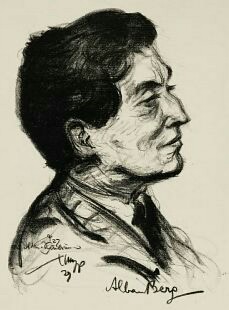
The Lyric Suite is a six-movement work for string quartet written by Alban Berg between 1925 and 1926 using methods derived from Arnold Schoenberg's twelve-tone technique. Though publicly dedicated to Alexander von Zemlinsky, the work has been shown to possess a "secret dedication" and to outline a "secret programme".

Ludwig van Beethoven's late string quartets are:

Othmar Schoeck was a Swiss Romantic classical composer, opera composer, musician, and conductor.

The term expressionism "was probably first applied to music in 1918, especially to Schoenberg", because like the painter Wassily Kandinsky (1866–1944) he avoided "traditional forms of beauty" to convey powerful feelings in his music. Theodor Adorno interprets the expressionist movement in music as seeking to "eliminate all of traditional music's conventional elements, everything formulaically rigid". This he sees as analogous "to the literary ideal of the 'scream' ". As well Adorno sees expressionist music as seeking "the truthfulness of subjective feeling without illusions, disguises or euphemisms". Adorno also describes it as concerned with the unconscious, and states that "the depiction of fear lies at the centre" of expressionist music, with dissonance predominating, so that the "harmonious, affirmative element of art is banished". Expressionist music would "thus reject the depictive, sensual qualities that had come to be associated with impressionist music. It would endeavor instead to realize its own purely musical nature—in part by disregarding compositional conventions that placed 'outer' restrictions on the expression of 'inner' visions".
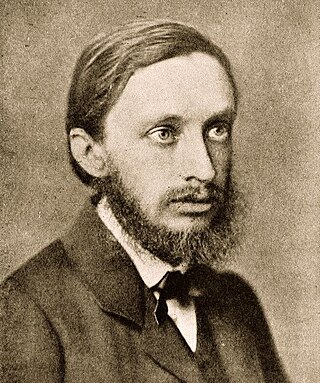
Hermann Gustav Goetz was a German composer who spent much of his career in Switzerland. He is best known for his 1872 opera Der Widerspänstigen Zähmung, based on Shakespeare's The Taming of the Shrew.

Alban Berg's Five Orchestral Songs after Postcards by Peter Altenberg, Op. 4, were composed in 1911 and 1912 for medium voice, or mezzo-soprano. They are considered a true song cycle, unlike his previous two groups of songs, the Sieben frühe Lieder of 1908 and the Vier Gesänge, Op. 2, of 1910, and they are his first work for orchestra. The postcard texts by contemporary Viennese poet Peter Altenberg recount the stormy but beautiful condition of the soul and the palpable sensations of love and longing. The highly imaginative music responds with many displaced ostinati and a conflicted, lyrical passion.

Antigone is an opera in three acts by Arthur Honegger to a French libretto by Jean Cocteau based on the tragedy Antigone by Sophocles. Honegger composed the opera between 1924 and 1927. It premiered on 28 December 1927 at the Théâtre Royal de la Monnaie with sets designed by Pablo Picasso and costumes by Coco Chanel.
Introduction and Allegro for Harp, Flute, Clarinet and String Quartet is a chamber work by Maurice Ravel. It is a short piece, typically lasting between ten and eleven minutes in performance. It was commissioned in 1905 by the Érard harp manufacturers to showcase their instruments, and has been described as a miniature harp concerto. The premiere was in Paris on 22 February 1907.
Johannes Brahms' String Quartet No. 1 in C minor and String Quartet No. 2 in A minor were completed in Tutzing, Bavaria, during the summer of 1873, and published together that autumn as Op. 51. They are dedicated to his friend Theodor Billroth. He only published one other string quartet, No. 3 in B-flat Major, in 1876.

Alexander Zemlinsky or Alexander von Zemlinsky was an Austrian composer, conductor, and teacher.

The Skandalkonzert was a concert conducted by Arnold Schoenberg, held on 31 March 1913. The concert was held by the Vienna Concert Society in the Great Hall of the Musikverein in Vienna. The concert consisted of music by composers of the Second Viennese School.
References
- ↑ "Alban Berg – Streichquartett op. 3". Universal Edition. Retrieved 3 November 2010.
- ↑ Theodor W. Adorno; Juliane Brand; Christopher Hailey (1991). Alban Berg: Master of the Smallest Link. Cambridge University Press. pp. 53ff. ISBN 978-0-521-33884-4.
- ↑ Robin Stowell (13 November 2003). The Cambridge Companion to the String Quartet. Cambridge University Press. pp. 291ff. ISBN 978-0-521-00042-0.
- ↑ Anthony Pople (24 June 1991). Berg: Violin Concerto. Cambridge University Press. pp. 11ff. ISBN 978-0-521-39976-0.
- ↑ Perle, George (1990). The Listening Composer. University of California Press. pp. 21ff. ISBN 978-0-520-06991-6.
- ↑ Casaglia, Gherardo (2005). "24 April 1911, Musikverein" . L'Almanacco di Gherardo Casaglia (in Italian).
- ↑ "Alban Berg". Classical Composers Database. 27 June 2005. Retrieved 3 November 2010.